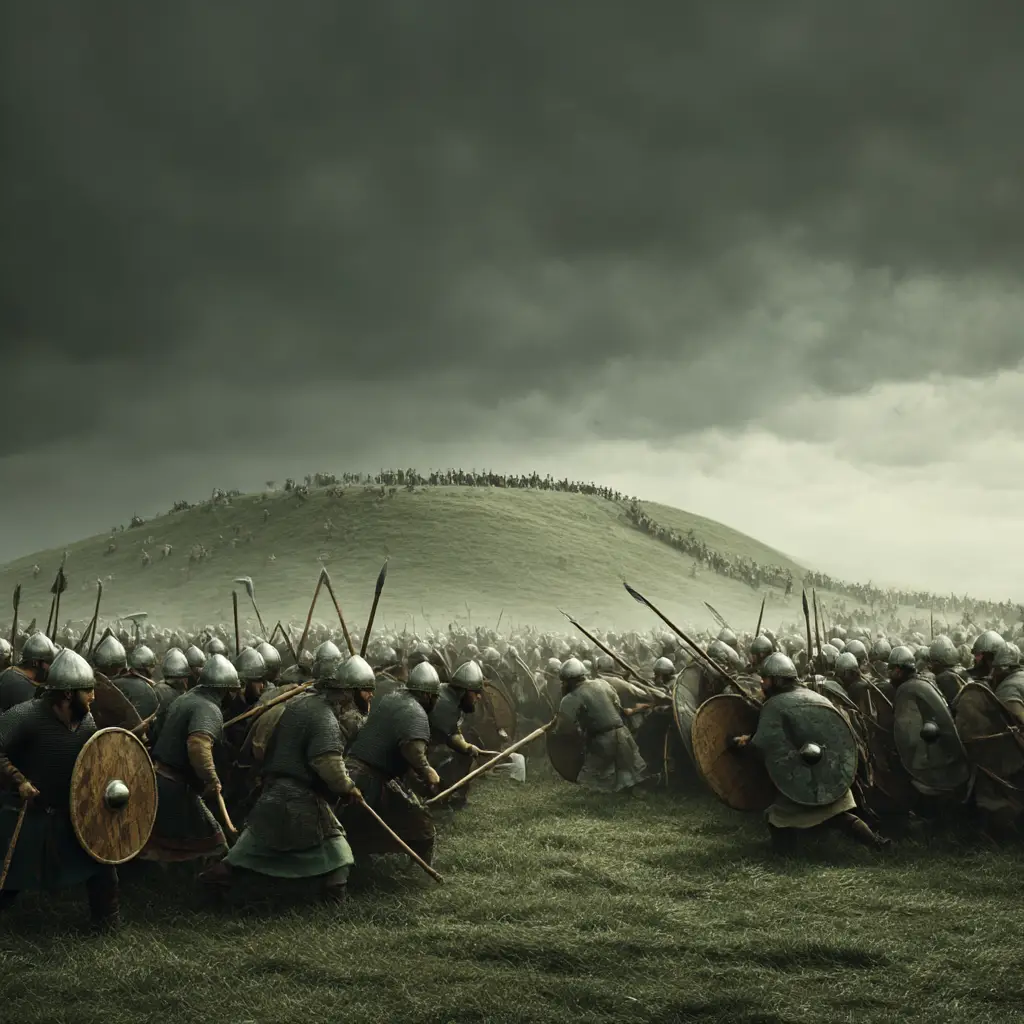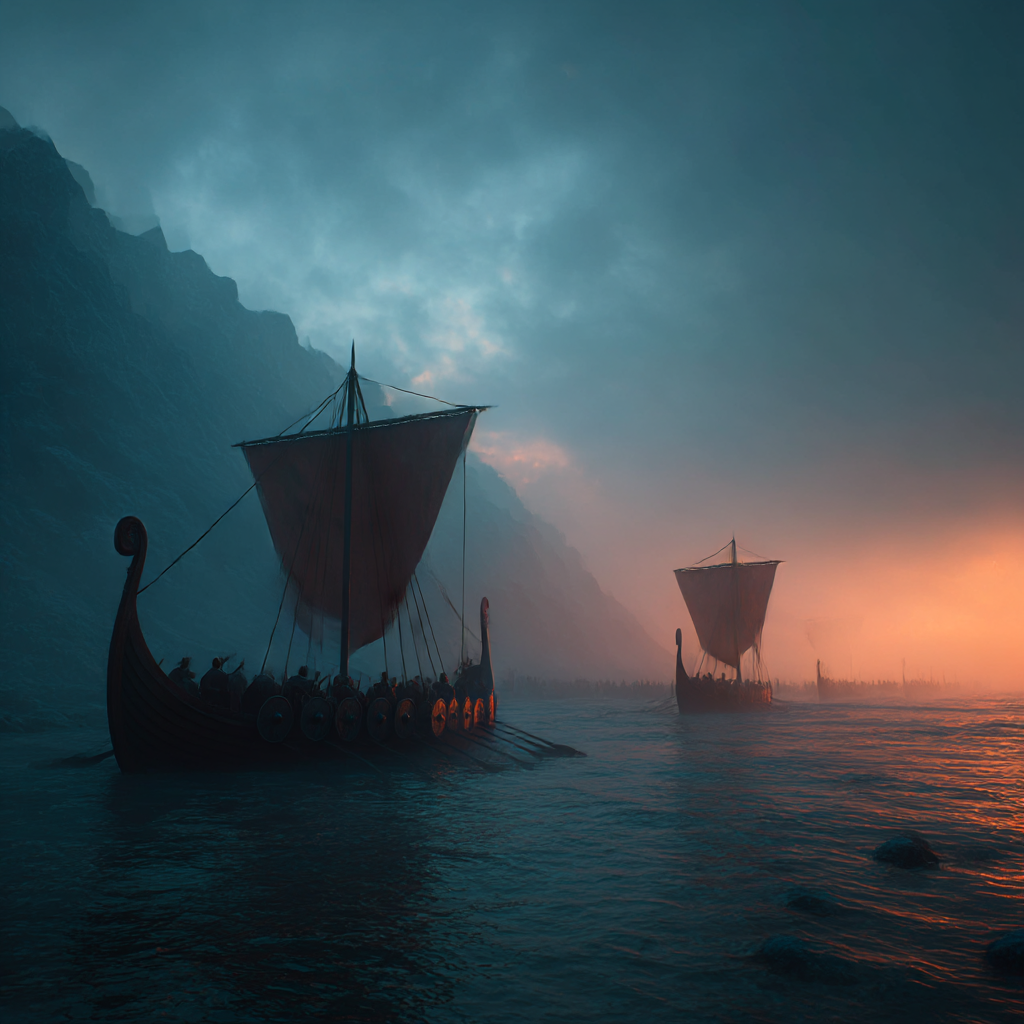The Vikings and the Battle of Tara
The Battle of Tara, fought in 980 AD near the Hill of Tara in County Meath, marked a significant moment in the decline of Viking power in Ireland. This battle saw the forces of the Irish High King Máel Sechnaill mac Domnaill clash with Norse-Gael warriors from the Kingdom of Dublin, led by King Amlaíb Cuarán. The result was a decisive Irish victory that helped shift the balance of power in favour of the native Gaelic rulers and reduced Viking dominance in the region.
During the 9th and 10th centuries, Viking settlers had established strongholds across coastal Ireland, most notably in Dublin, Wexford, Waterford, Cork, and Limerick. These Norse settlers, often referred to as Norse-Gaels, had integrated to some extent with the local population, adopting aspects of Gaelic culture while retaining their own identities.
The Kingdom of Dublin became the most powerful of these Norse settlements and was ruled by a series of Norse kings, including Amlaíb Cuarán (also known as Olaf Sigtryggsson), who had longstanding ambitions to expand his influence further inland. His rule, however, was frequently challenged by Irish kings determined to assert control over Viking-held territories.
The Build-Up to Battle
In the years leading up to the Battle of Tara, tensions between the Norse of Dublin and the southern Uí Néill dynasty, led by Máel Sechnaill mac Domnaill, reached breaking point. The Norse had raided and plundered Christian monasteries and communities in Meath and Leinster, provoking outrage among the Irish.
Máel Sechnaill, seeking to restore Irish sovereignty and end Viking aggression, rallied a large force of Gaelic warriors. His campaign aimed not only to defeat the Dublin Norse militarily but to reclaim Irish captives and treasures taken in earlier raids.
The Battle of Tara (980 AD)
The battle took place near the symbolic Hill of Tara, the ancient seat of the High Kings of Ireland. The Irish army, led by Máel Sechnaill, confronted the Norse-Gael forces of Amlaíb Cuarán. The engagement was fierce, and according to historical sources, the Irish forces routed the Viking army.
Many Norse warriors were slain in battle, and the victory proved to be a serious blow to Viking ambitions in Ireland. The Irish captured a large number of slaves and valuables and freed many of their own people who had previously been taken by the Norse.
Aftermath
Following the defeat, Amlaíb Cuarán abdicated the throne of Dublin and retired to the monastic life at Iona, where he later died. His departure signalled the end of an era of dominant Viking kingship in Dublin.
Máel Sechnaill’s victory at Tara was not only a personal triumph but also a major step in the restoration of Irish rule over Viking settlements. While the Norse continued to reside in Dublin and other towns, their military and political power had been curbed.
This battle also paved the way for a more unified resistance to Viking raids and influence, eventually leading to the integration of Norse communities into the broader Gaelic world. Over time, Norse-Gael culture became a distinctive feature of medieval Irish society, blending Scandinavian and Irish traditions.
The Battle of Tara remains a defining moment in Irish history. It symbolised the resilience of the Irish kingdoms in the face of foreign incursions and marked a significant reduction in Viking power in Ireland. The Hill of Tara itself, already steeped in myth and royal symbolism, gained further historical importance as the site of this pivotal conflict.
For modern historians and enthusiasts, the battle highlights the complex and often violent interactions between the Vikings and the native Irish during the early medieval period, as well as the shifting tides of power that shaped the future of Ireland.



